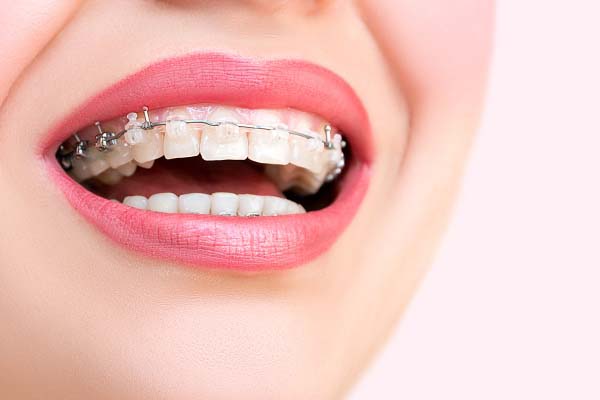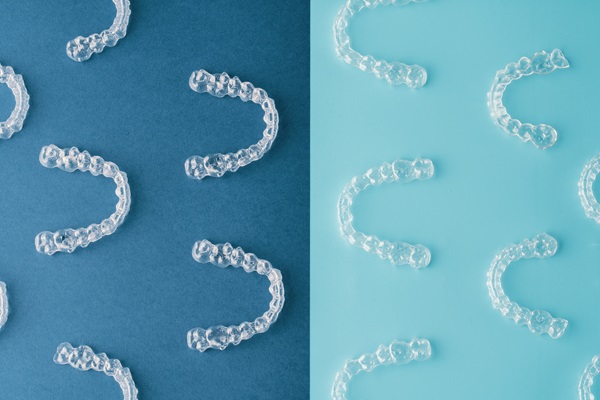3 Common Types of Braces

Braces are a common treatment that general dentists offer to patients who have crooked teeth or uneven bites. Modern dentistry has allowed for the evolution of multiple kinds of braces, which allows patients to consider the advantages of each one. Ready to learn more?
Three different types of braces
Each type of braces works similarly, in the sense that the goal is to straighten crooked teeth or adjust an uneven bite. Braces, no matter the kind, involve the use of brackets and wires. Every few weeks, the patient will visit their general dentist to undergo an adjustment. The adjustment tightens the wires and ensures that the braces are working, as the teeth shift into their new position.
Outlined below are three of the most common types of braces. Keep reading to find out more!
Traditional metal braces
Metal braces are the most common type of teeth straightening treatment available today. They are also the longest known method of treatment among general dentists. Braces that are made of metal consist of brackets and wires.
An individual metal bracket is cemented onto the front of each tooth, and metal wires run through each bracket connecting them all together. Small bands are placed to help secure the brackets. When general dentists are administering traditional braces to children, they often have the opportunity to choose a color for their bands.
Ceramic or clear braces
Ceramic braces have become a popular choice. They are also referred to as clear braces because the wires are clear in color and the brackets are tooth-colored. This type of braces works the same way that traditional metal ones do, except, they are made of different materials.
General dentists often administer clear braces to patients looking for a more discreet option. Because the wires are clear and the brackets are tooth-colored, they are less noticeable, which can be seen as advantageous to an adult patient who does not want attention drawn to their mouth.
Lingual braces
Lingual braces are another common type of teeth straightening treatment that general dentists administer. Lingual braces are similar to metal ones, in the sense that they are made of metal. However, unlike traditional braces, lingual ones are cemented onto the underside of the teeth, instead of the front.
One advantage of these braces is that they are not easily noticeable. Patients consider this type when they are seeking a more discreet treatment route. One thing to note about lingual braces is that they can be irritating to the mouth, specifically, the tongue. Because they are on the underside of the teeth, the tongue is more likely to run into the brackets and wires.
Reach out today!
Braces are a great option to straighten crooked teeth and correct uneven bites. With the help of a general dentist, braces of any kind can be considered and explored. Reach out today with any questions or concerns. Our team is here to help.
Request an appointment here: https://www.orangecoastortho.com or call Orange Coast Orthodontics at (949) 860-1231 for an appointment in our Laguna Hills office.
Check out what others are saying about our services on Yelp: Read our Yelp reviews.
Recent Posts
Thinking of going for orthodontic treatment but worried about unsightly metal braces? Read on to learn about the advantages of aesthetic braces. For decades, patients had no choice but to straighten their teeth with unsightly braces with metal brackets and wires. This had a tremendous impact on their self-esteem, and many decided to forego braces…
Clear braces for teens and traditional braces are two popular options for teenagers who need teeth straightening treatments. Braces are the first effective procedure for straightening teeth and have been used since the 1800s.Virtually everyone on the planet grew up with someone who wore braces, and that is a testament to how effective these devices…
Dental professionals generally recommend a child should see an orthodontist at or around age 7. However, in the presence of a confirmed or suspected orthodontic issue, it is appropriate for a younger child to make a visit. The importance of preserving and maintaining a child's oral health cannot be overstated. Therefore, the task of choosing…
Lingual braces are a far less common method that is used in orthodontics to straighten teeth that need attention. Orthodontists do not recommend lingual braces nearly as often for various reasons; nonetheless, they are a promising treatment method that can correct imperfections. Additionally, they offer some benefits that other teeth straightening methods do not. Continue…


